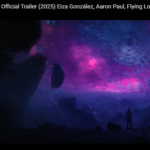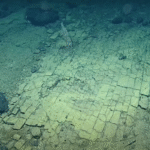A Vision Sparked by Ancient Silence
In the 1920s, Thornwell Jacobs, then president of Oglethorpe University, found himself frustrated by the sparse records of ancient civilizations like Egypt and Babylon. Researching for one of his books, Jacobs realized that the only remnants of these societies were fragmented items from tombs and stone carvings.
He asked a radical question:
“What if we could leave behind a full record—on purpose—for people 6,000 years from now?”
That question became a mission. By 1936, Jacobs publicly shared his vision of creating a modern-day tomb: a permanent, scientifically preserved vault that would document human life, thought, culture, and invention up to that moment.
Why 8113 AD?
Jacobs used a clever logic:
- The first known calendar was created in 4241 BC.
- 6,177 years had passed by 1936.
- He projected that same number into the future:
4241 BC → 1936 → 8113 AD.
Thus, the Crypt of Civilization was set to be opened on May 28, 8113 AD, exactly 6,177 years after it was sealed in 1940.
How It Was Built to Survive Eternity
The Crypt was constructed from 1937 to 1940 in the basement of Phoebe Hearst Hall at Oglethorpe University in Georgia. The site, once a swimming pool, was converted into a room-sized, airtight vault measuring:
- 20 feet long
- 10 feet wide
- 10 feet high
Key Construction Details:
- Walls lined with porcelain enamel plates, sealed with pitch
- Resting on Appalachian bedrock, protected by a 7-foot-thick stone ceiling
- Filled with nitrogen gas to prevent aging and oxidation
- Sealed behind a welded stainless steel door, now fused shut with a plaque addressed to the future
Jacobs enlisted the help of Thomas Kimmwood Peters, an inventor and expert in microfilm, to serve as the crypt’s archivist and engineer. The project received guidance from the National Bureau of Standards and was financed by philanthropists and industrialists.
What’s Inside the Vault
Jacobs and Peters wanted to preserve not only elite knowledge, but also the small, ordinary details of life in the 1930s. The Crypt is a museum, archive, and time machine all in one.
Preserved Knowledge:
- Over 640,000 pages of microfilm containing more than 800 classic texts, including:
- The Bible
- The Quran
- Homer’s Iliad
- Dante’s Divine Comedy
- The Bible
- An original script of Gone with the Wind, donated by David O. Selznick
- Films about Ohio’s industrial history and agriculture
Audio-Visual Archives:
- Voice recordings of:
- Adolf Hitler
- Joseph Stalin
- Franklin D. Roosevelt
- Benito Mussolini
- Popeye the Sailor
- A champion hog caller
- Adolf Hitler
- Electric microfilm readers and picture projectors
- A windmill-powered generator for future energy needs
- A seven-power magnifier in case electricity no longer exists
Everyday Life in 1940:
- A woman’s purse with typical contents
- Dental floss, a pacifier, and a mechanical pencil
- A manual typewriter, electric toaster, cash register, and adding machine
- Toys including:
- Donald Duck
- The Lone Ranger
- A black doll
- A set of Lincoln Logs
- Donald Duck
- A specially preserved bottle of Budweiser beer
One standout item:
The Language Integrator – a hand-cranked device to teach English to future generations. It was designed as a modern-day Rosetta Stone.
The Ceremony That Sealed It Forever
The Crypt was officially sealed on May 25, 1940. The ceremony was broadcast nationwide by WSB Radio and attended by leading political and civic figures:
- Atlanta Mayor William B. Hartsfield
- Governor Eurith D. Rivers
- Postmaster General James A. Farley
- Pulitzer Prize-winner Clark Howell
In a message directed to the people of 8113 AD, Jacobs declared:
“The world is engaged in burying our civilization forever, and here in this crypt we leave it to you.”
Final items added:
- Steel printing plates of the Atlanta Journal with World War II headlines
- Recordings from the sealing ceremony
A Legacy That Reached the World
The Crypt was the first true time capsule of modern civilization, a claim later confirmed by the Guinness Book of Records in 1990. Its influence rippled across the world.
Immediate Impact:
- Inspired the Westinghouse Time Capsule, created for the 1939 World’s Fair and sealed for 5,000 years
- Introduced the phrase “time capsule” into the English language
- Featured in major outlets like AP, NBC, CNN, New York Times, and NPR
Long-Term Recognition:
- In 1990, Oglethorpe University founded the International Time Capsule Society
- Renewed interest emerged during the Millennium celebrations (1999–2001)
Featured in History Channel’s “Life After People”

















